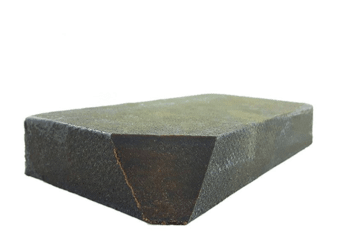The Healing Power of Marijuana: Benefits for Chronic Pain Patients

Benefits of Marijuana for Patients with Chronic Pain
Chronic pain is a debilitating condition that affects millions of people worldwide. It can have a significant impact on a person’s quality of life, making it difficult to perform daily tasks and enjoy leisure activities. Traditional pain medications can be ineffective and may have unwanted side effects. However, recent studies have shown that marijuana can be an effective treatment for chronic pain. In this article, we will explore the benefits of marijuana for patients with chronic pain.
Introduction
- Definition of chronic pain
- Prevalence of chronic pain
- The limitations of traditional pain medications
The Science of Marijuana
- What is marijuana?
- How does marijuana work?
- Cannabinoids and their effects
- The endocannabinoid system
Marijuana and Chronic Pain
- Marijuana as an analgesic
- Marijuana vs. traditional pain medications
- Types of chronic pain treated by marijuana
Marijuana Dosage and Administration
- Forms of marijuana
- Dosage considerations
- Risks and side effects
The Legal Landscape
- Marijuana laws in the United States
- Medical marijuana programs
- Challenges faced by patients and physicians
Other Benefits of Marijuana
- Marijuana and anxiety
- Marijuana and depression
- Marijuana and insomnia
Case Studies
- Patient experiences with marijuana for chronic pain
- Success stories and testimonials
Risks and Limitations
- Addiction potential
- Negative side effects
- The need for further research
Conclusion
- Summary of the benefits of marijuana for chronic pain patients
- The potential for future developments in this area
Marijuana has been used for medicinal purposes for thousands of years. However, only in recent years has it been studied and acknowledged for its potential benefits in treating chronic pain. Chronic pain is a complex condition that can be caused by a wide range of underlying medical conditions. Traditional pain medications, such as opioids and nonsteroidal anti-inflammatory drugs (NSAIDs), are often used to manage chronic pain. However, these medications can have unwanted side effects and may not always be effective in treating the pain.
Marijuana, also known as cannabis, contains compounds called cannabinoids, which interact with the body’s endocannabinoid system to produce therapeutic effects. The two main cannabinoids in marijuana are delta-9-tetrahydrocannabinol (THC) and cannabidiol (CBD). THC is responsible for the psychoactive effects of marijuana, while CBD has been shown to have a variety of therapeutic benefits, including pain relief.
Recent studies have shown that marijuana can be an effective treatment for chronic pain. In fact, a study published in the Journal of the American Medical Association found that marijuana was effective in treating chronic pain in adults. Marijuana was found to be more effective than traditional pain medications, with fewer side effects.
Marijuana can be administered in a variety of forms, including smoking, vaporizing, edibles, and topical creams. Dosage considerations are important, as too little marijuana may not be effective, while too much can result in unwanted side effects. Common side effects of marijuana use include dry mouth, red eyes, and impaired coordination.
Marijuana laws vary by state and country. In the United States, medical marijuana programs have been established in many states, but patients still face challenges in obtaining marijuana due to the federal government’s classification of marijuana as a Schedule I drug.
In addition to its benefits in treating chronic pain, marijuana has been shown to have therapeutic benefits for other medical conditions such as anxiety, depression, and insomnia. However, it is important to note that marijuana can be addictive and may have negative side effects, such as impaired cognition and respiratory problems.
Despite the potential risks and limitations, many chronic pain patients have found relief through the use of marijuana. Case studies and patient testimonials demonstrate the effectiveness of marijuana in managing chronic pain and improving overall quality of life.
In conclusion, marijuana has shown promise as an effective treatment for chronic pain. Its therapeutic benefits, particularly in comparison to traditional pain medications, make it a viable option for chronic pain patients. However, its legal status and potential risks must also be considered. As further research is conducted, we may see further developments in the use of marijuana for chronic pain and other medical conditions.
FAQs
- Is marijuana addictive?
- While marijuana is not considered to be physically addictive in the same way as opioids or other drugs, it can be psychologically addictive for some users.
- What are the potential side effects of marijuana?
- Common side effects of marijuana use include dry mouth, red eyes, impaired coordination, and increased appetite. In rare cases, it can also cause anxiety, paranoia, or hallucinations.
- Can marijuana be used to treat other medical conditions besides chronic pain?
- Yes, marijuana has been shown to have therapeutic benefits for a variety of medical conditions, including anxiety, depression, and insomnia.
- How do I know if medical marijuana is legal in my state?
- Laws regarding medical marijuana vary by state. Check with your state’s department of health or medical marijuana program for information on eligibility and regulations.
- What are the risks of using marijuana to treat chronic pain?
- Risks associated with marijuana use include addiction potential, negative side effects, and the potential for impairment while operating machinery or driving. It is important to consult with a healthcare provider before using marijuana to treat chronic pain.











